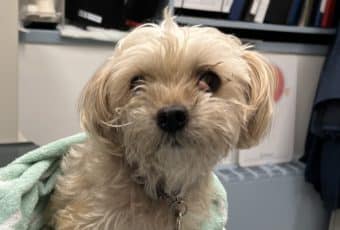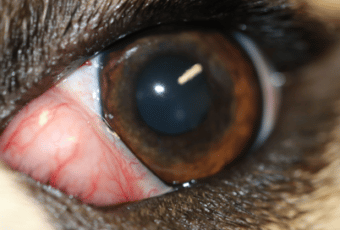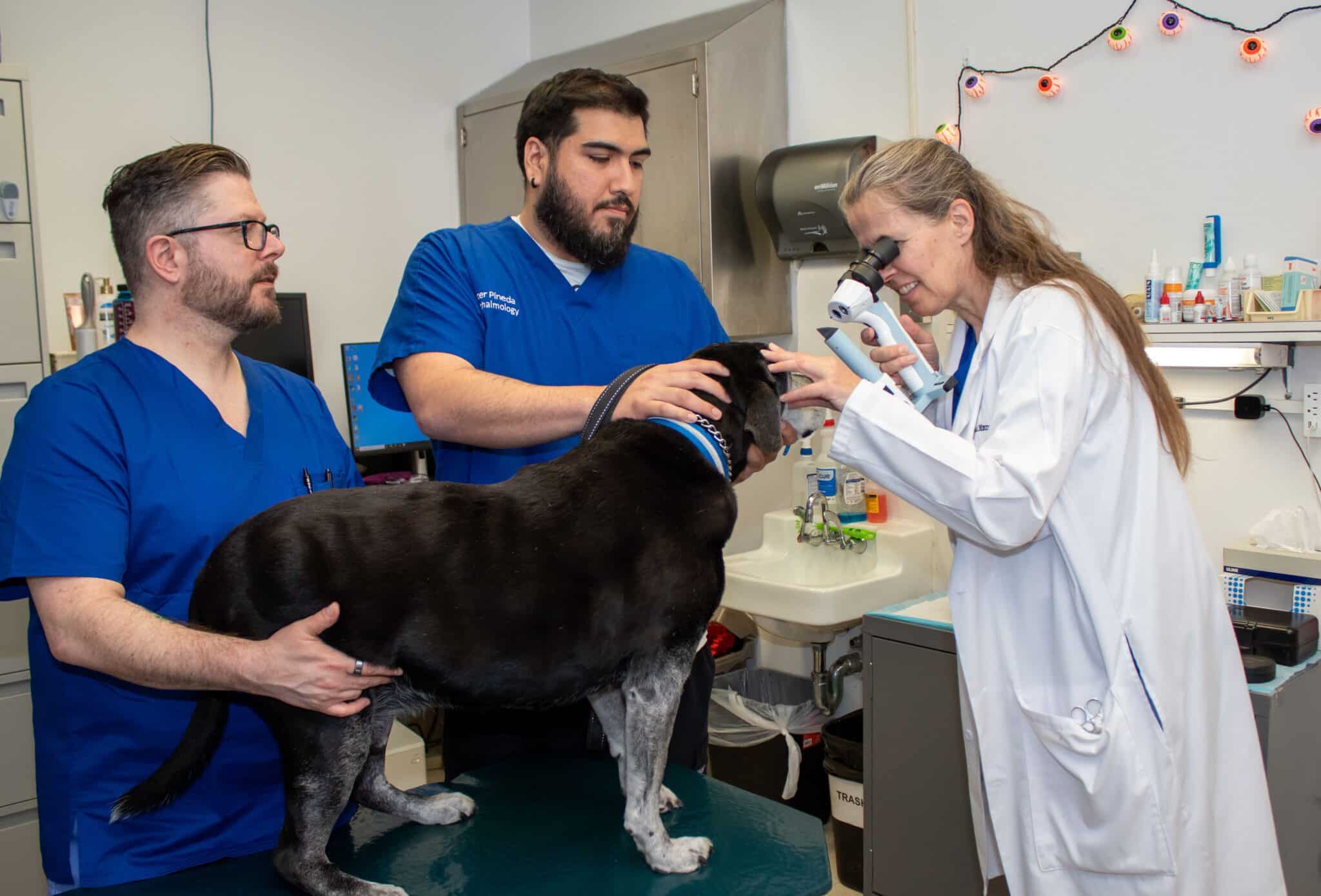Cherry Eye

Background
Dogs and cats have a third eyelid, called the nictitating membrane or nictitans. This shiny, pink membrane is tucked behind the lower eyelid and pops up when a pet is sedated or sick, has a mass behind or under the eye, or has a neurological condition. The nictitans contains a gland that is responsible for tear production. Cherry eye is a condition where the gland within the third eyelid protrudes from its normal position, resulting in a red, swollen mass near the inner eyelid that kind of looks like a little red cherry. It is believed to be caused by weak tissue fibers failing to hold the gland in place. One or both eyes can be affected, and improper treatment of this condition can result in dry eye.
Risk Factors
Cherry eye is hereditary, with certain dog and cat breeds predisposed to the condition. It is also typically seen in younger pets rather than adults. Dog breeds at risk of cherry eye include:
- Beagles
- Bloodhounds
- Boston terriers
- Bulldogs
- Cocker spaniels
- Lhasa Apso
- Poodles
- Pugs
- Shih-Tzus
- And other brachycephalic (flat-nosed) breeds
Cat breeds at risk of cherry eye include:
- Burmese cats

Signs
Pink, swollen mass protruding from inside the lower eyelid
Diagnosis
Cherry eye is fairly easy to diagnose due to its appearance. The prolapsed gland is typically pink and appears to protrude from inside the lower eyelid.
Treatment
Cherry eye requires surgical intervention to tack the gland back in place with sutures, typically performed by a veterinary ophthalmologist. It is important to treat cherry eye sooner rather than later as chronic prolapse of the gland can cause inflammation and infection of the gland. Following surgery, your pet will be prescribed medications to control infection and relieve any swelling or discomfort.
An old-fashioned treatment for cherry eye involved surgically removing the gland. This is no longer recommended because the gland is responsible for nearly half of a dog or cat’s tear production. Without the gland, the composition of tear film will be abnormal and can keratoconjunctivitis sicca, or dry eye, which will require lifelong administration of eye medication.
Prevention
Since cherry eye is a hereditary condition, it cannot be prevented. If your dog or cat is a breed predisposed to cherry eye, make sure to be on the lookout for any swelling or a red mass near your pet’s lower eyelid. Should you notice anything unusual with your pet’s eyes, schedule an appointment with your veterinarian right away.
Make an Appointment





























